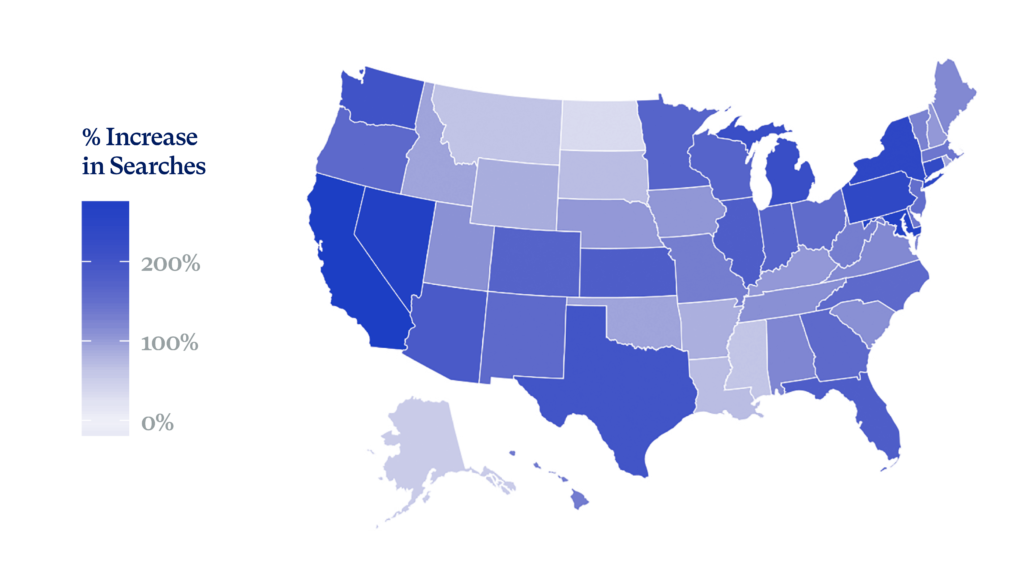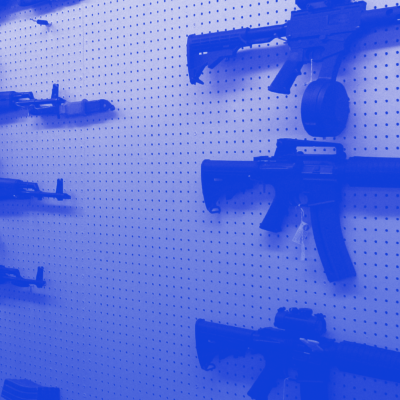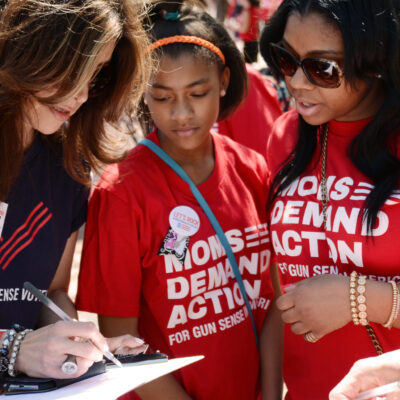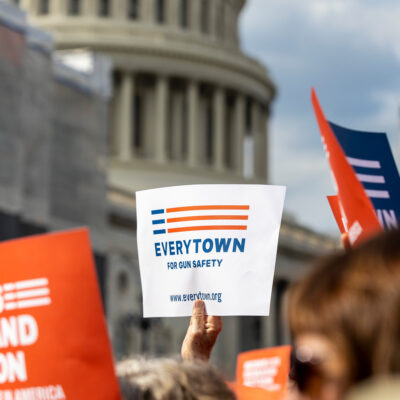Compounding Crises: Gun Preparation Amid the COVID-19 Pandemic

The threats of the COVID-19 pandemic do not end with viral infection. As public health researchers with a focus on gun violence, we are particularly concerned about increased risks of gun suicide, unintentional shootings and domestic violence shootings during these challenging times. Yet most government data on gun violence, another public health crisis, is available only annually—with a two-year time lag. We can’t wait that long. For our health systems to understand firearm suicide patterns, detect risks, and take steps to avert often preventable tragedies, we urgently need better data. In a public health field with a near-complete absence of officially collected real-time data, Google search data can provide extremely important signals and be a vital alternative source of information.
Americans searched online for how to buy and clean guns approximately 2.1 million times as the coronavirus pandemic worsened, an unprecedented spike in gun preparation searches that far exceeded the spikes seen after major mass shootings.
This is the key finding from our analysis of Google search data, which we describe in more detail here. Forty-nine states and the District of Columbia saw increases in search activity, we found, and the overall spike was some 40 percent higher than the spikes after the mass shootings at both Sandy Hook School and Marjory Stoneman Douglas High School. While Everytown has previously used Google data to track gun interest, we’ve never seen numbers this high.
Research shows that in the past, a spike in online searches for guns has led to a spike in gun purchases and ultimately, gun deaths. Americans’ decision to purchase or take firearms out of storage during the pandemic could exacerbate the ongoing gun violence crisis, and firearm injuries and deaths could increase at the very time hospitals, healthcare systems and first responders are already stretched dangerously thin.
The strong relationship between online gun preparation searches and gun deaths is well-documented. In the five months after the Dec. 14, 2012 Sandy Hook School shooting, gun sales spiked by 3 million; according to research published in the journal Science, this spike resulted in an estimated 60 additional unintentional shooting deaths, including the deaths of 20 children.
The persisting, uncertain nature of the current crisis raises serious concerns that the number of unintentional shootings during and after the COVID-19 pandemic could be much higher. An unprecedented number of American children are spending their days at home, including millions with unsecured guns. At least 4.6 million children in America already live in homes with guns that are not securely stored—and kids in gun-owning homes often know where those guns are kept.
The potential fallout from record-breaking interest in gun preparation across the country during this pandemic is therefore deeply troubling.
It also extends to domestic violence and suicides. Many police departments and domestic violence hotlines across the country have already reported soaring increases in domestic violence calls as stay-at-home orders force people to quarantine with domestic abusers. Advocates worry that self-isolation measures, increased economic stress and the ongoing nature of the pandemic could potentially lead to an “explosive cocktail” of domestic abuse. Research shows that access to a gun in a domestic violence situation makes it five times more likely that a woman will be killed.
Many suicide prevention hotlines, too, are seeing increased call traffic, adding to fears that increases in gun exposure could lead to increases in gun suicides. Access to a firearm triples one’s risk of death by suicide, and these increased gun searches come as unemployment numbers hit record highs and people find themselves under increasing economic and psychological strain. For people experiencing suicidal ideation, access to a firearm can be the difference between life and death, because 90 percent of suicide attempts with a gun are fatal; only 4 percent by all other means are. But the elevated risk applies not only to the gun owner, but to everyone in the household, which is why increased gun searches amid the pandemic could make families less safe.
All of these concerns—about unintentional shootings, domestic violence, and suicide —underscore the public health risks associated with the increased search activity around buying and cleaning guns. America already has a gun suicide rate that is 10 times higher than that of all of our peer high-income nations and women in the United States are 21 times more likely to be killed with a gun. Add to that record gun searches, and a crisis poised to become the most disruptive event in a generation, and the stakes seem clear.
The current spike in gun preparation is bringing new risks into American homes during a national crisis. We need to know what the data show and to be talking about these risks and the steps that all of us, from gun owners to advocates to policymakers, can take to address them.
If you or someone you know is experiencing domestic violence, call the National Domestic Violence Hotline at 1-800-799-7233, available 24/7, for confidential assistance from a trained advocate. You can also find more resources on legal assistance in English and Spanish at WomensLaw.org. For additional resources on emotional, medical, financial, and legal consequences of gun violence for individuals and communities, please visit Everytown’s Resources page.
If you or someone you know is in crisis, please call the National Suicide Prevention Lifeline at 1-800-273-TALK (8255), or text HOME to 741741 to reach the Crisis Text Line for free from anywhere in the US.
Authors
-
Sarah Burd-Sharps
Sarah Burd-Sharps is the director of research for Everytown for Gun Safety.
-
Theodore Caputi
Theodore Caputi is a Marshall Scholar at the University of York and public health researcher.
-
John W. Ayers
John W. Ayers is the Vice Chief of Innovation at the University of California San Diego.
-
Mark Dredze
Mark Dredze is the John C. Malone Associate Professor at Johns Hopkins University.
-
Nick Suplina (he/him/his)
Nick Suplina is the Senior Vice President of Law & Policy for Everytown for Gun Safety, the nation’s largest gun violence prevention organization. Students Demand Action is the grassroots students arm of Everytown for Gun Safety.
The Latest

New Data, Same Conclusion: Smart Gun Laws Save Lives





